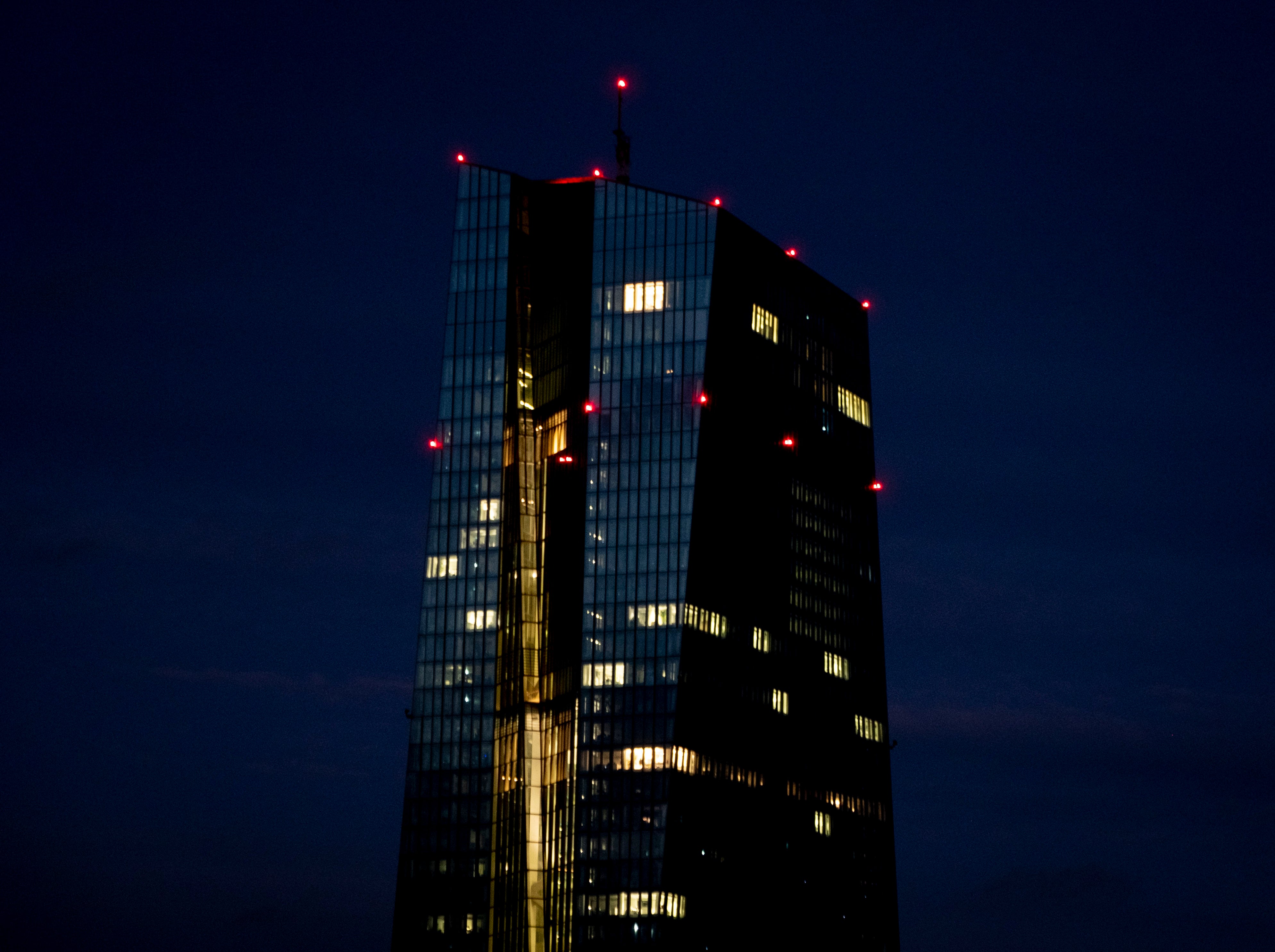European Central Bank faces gloomier picture for economy
The European Central Bank is confronting more economic gloom

Your support helps us to tell the story
From reproductive rights to climate change to Big Tech, The Independent is on the ground when the story is developing. Whether it's investigating the financials of Elon Musk's pro-Trump PAC or producing our latest documentary, 'The A Word', which shines a light on the American women fighting for reproductive rights, we know how important it is to parse out the facts from the messaging.
At such a critical moment in US history, we need reporters on the ground. Your donation allows us to keep sending journalists to speak to both sides of the story.
The Independent is trusted by Americans across the entire political spectrum. And unlike many other quality news outlets, we choose not to lock Americans out of our reporting and analysis with paywalls. We believe quality journalism should be available to everyone, paid for by those who can afford it.
Your support makes all the difference.The European Central Bank is looking at a darkening picture for the economy as infections and deaths surge. With more than a trillion euros of pandemic stimulus still in the pipeline, President Christine Lagarde is expected to underline Thursday that the bank has the means keep credit affordable and support the hoped-for recovery.
Spiking virus totals have led Germany, the eurozone's biggest economy to extend restrictions on many businesses involving contact with the public until Feb. 14, while Portugal hit a record for new COVID-19 infections and France imposed a 6 p.m. curfew. Vaccination rollouts have been slower than many would like.
That is darkening the already gloomy outlook for the first few weeks of 2021, after Europe ended 2020 with fanfare over the start of vaccinations. The winter surge suggests that the first quarter could see economic output fall again after an expected contraction in the fourth quarter of 2020.
Official figures for 2020 are expected Feb. 2. The EU's executive commission has forecast a downturn of 7.8% for 2020 and growth of 4.2% for this year.
Yet no additional action is expected from Thursday's meeting of the 25-member ECB governing council, which sets monetary policy for countries that are members of the euro. That is because at their last meeting the board added 500 billion euros of pandemic stimulus in the form of bond purchases, bringing the total emergency support to 1.85 trillion euros ($2.66 trillion) in purchases to run at least through March, 2022.
More than a trillion of that has not yet been spent. Through the purchases, the ECB keeps bond market and bank borrowing costs low. The goal is to make sure companies that may be struggling can get the financing they need to keep going.
If the pandemic downturn lasts longer than expected, “the ECB would simply extend its current support measures for even longer,” said Andrew Kenningham, chief Europe economist for Capital Economics.
Attention will focus on the post-meeting news conference by Lagarde and her comments on the economic outlook. She has warned against premature relief over vaccinations before they can be rolled out, and underlined that the central bank will do what it needs to in order to keep credit flowing to the economy.
The ECB's polices have kept financial markets calm despite the pandemic. Germany's DAX blue chip stock index hit a record high Jan. 7. Meanwhile, ECB stimulus has kept bond market borrowing costs low for governments, who are adding more debt as they spend on support for the economy and workers, including by paying the salaries of furloughed workers.
Since the ECB purchases are driving down bond market borrowing costs, it is making it easier for governments to spend without being hit by high interest payments for now. The European Union is adding more support through a 750 billion-euro recovery fund to support investment in projects that reduce emissions of greenhouse gases and promote the spread of digital technology. That fund is supported by common borrowing among member countries, a step toward further integration and solidarity among union members.